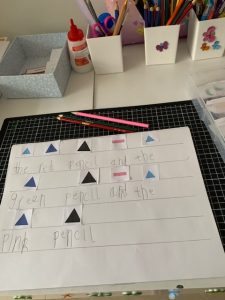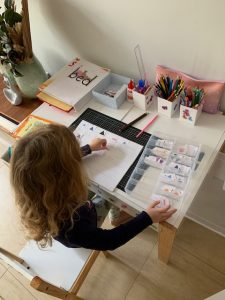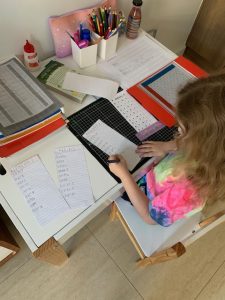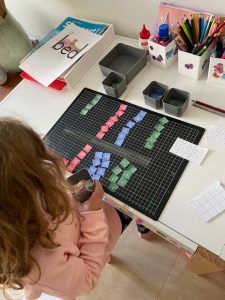Remote education and moving forward
Remote education and moving forward – a reflection from Mika Shojima, Sydney Montessori School
As we all know, Greater Sydney has been experiencing an unprecedented lockdown from 26 June and schools were forced to conduct remote education for the whole period of Term 3 (12 July-17 September). This was a great challenge for Montessori teachers because we work with a range of multiple aged children and use specific materials for the children’s learning.
As a 3-6 teacher at a Montessori school in the south of Sydney, I was determined to maintain a connection between the Montessori materials and students at home. This has been one of the primary challenges of remote education via Zoom. For examples as to how I achieved this, I used the teen and ten beads and boards with 4-year-olds to practise counting beyond 10 and forming 2-digit numbers so that they can use these materials independently once they come back to class.
I also did math operations using the golden bead materials, placing the children’s name cards in front of the three trays as if they were sitting with me in the classroom. It was a bit of effort to set up, but I simply did not want to teach math operations with the workbooks that some schools provide because this way, the children were able to continue the activities they had been doing in class before the lockdown.
The continent globe, puzzle maps, parts puzzles, constructive triangle boxes, moveable alphabet were some of the materials I used repeatedly. I did not forget the importance of movement; for example, I asked the children to go find something light/heavy, or a circle/triangle, etc. Practical Life skills, science experiments, arts and crafts and gardening were also fostered. I must confess though that I used some YouTube videos for teaching about seasons, weather, songs, and animals.
As children aged 3 to 6 are sensorial learners, online learning is clearly not optimal. However, surprisingly, they were able to engage and further their learning via Zoom lessons with support from their families and teachers’ preparation. I noticed that even children as young as 4 years old made progress in Maths, English, and other learning areas.
Making online learning successful while working with the children physically attending class at the same time was the result of collaboration, hard work and dedication from classroom assistants. Although providing remote education was very tiring and draining, the words of one of my classroom assistants revitalised my energy: “Let’s make it our best term for the children”.
It is a great relief for us that schools in Sydney will resume in a staggered manner and my class will be welcoming all the students on the 18 October. A 4-year-old apparently said joyfully to her dad: “Phew! No more Zoom meetings!”. A 5-year-old who came to school on the first day of Term 4 after a whole term away said: “I am so excited, but a bit nervous”. This is the honest voice of the child.
When the government announced the recommencing of schools, I asked myself what we as adults need to do. To be honest, I could not think of anything special. Despite the closure of school for a whole term being an unusual event, I believe that what we need to do is still the same: prepare an orderly and aesthetic environment and provide a calm and peaceful state with a welcoming atmosphere from the adults. Above all, we need to ensure the children’s freedom to move and communicate, a reinforcement of grace and courtesy, and a consistent, predictable, and precise order in the environment and routines. After all, what the children need is the normal 3-6 environment where they can feel a sense of belonging and security.
I wish the very best for everyone in the Montessori community in Australia for the rest of 2021.




